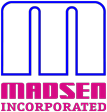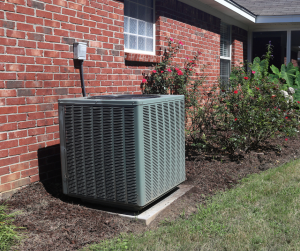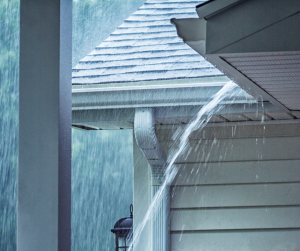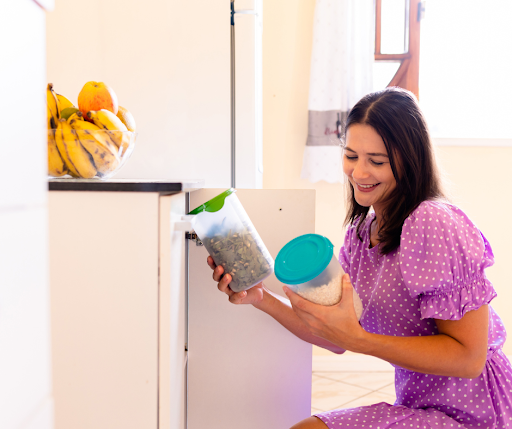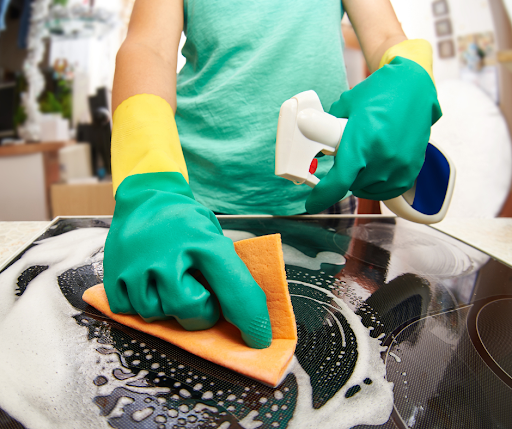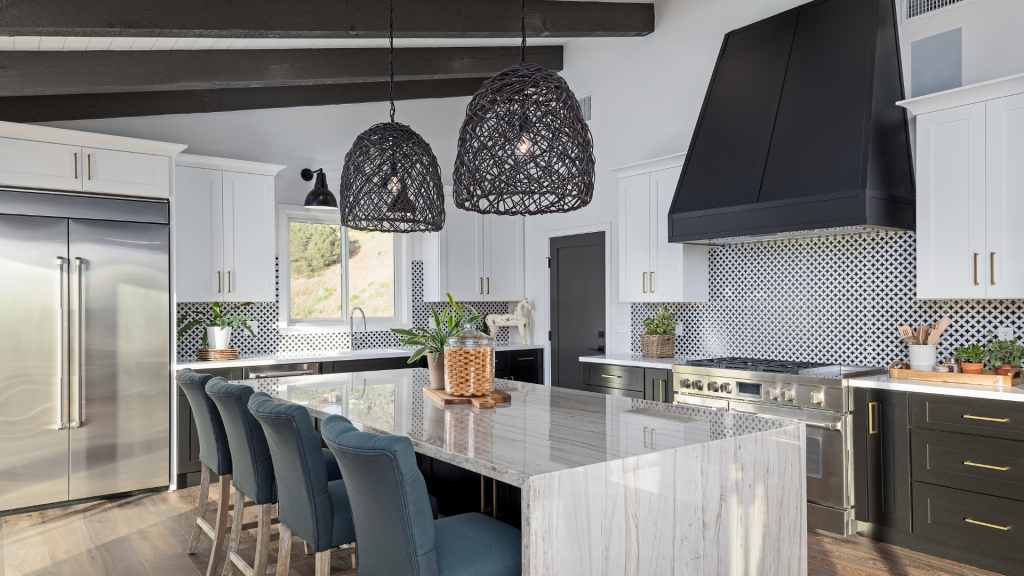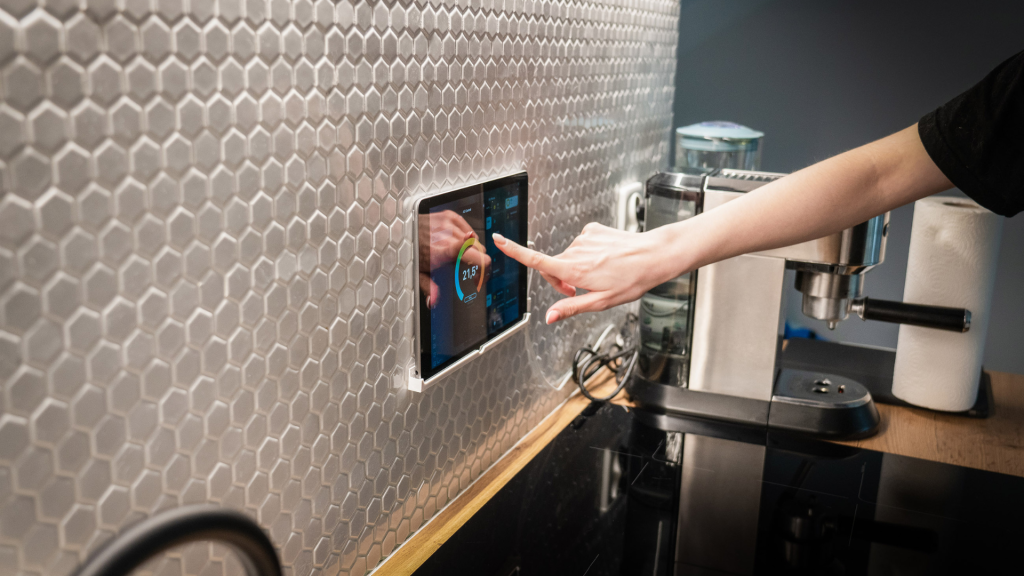Author Archives: 2010admin

Spring is in full bloom! Flowers are blossoming, birds are singing, and the rain is pouring. While those April showers help bring May flowers, they can also take a toll on your HVAC system if you’re not prepared. Don’t let excess moisture and unpredictable weather put a damper on your home’s comfort.
One common misconception is that your AC unit needs a cover during colder or wet months. In reality, covering it can do more harm than good. A covered unit can become an inviting home for critters like rats, mice, and raccoons, which may nest inside and chew on vital wiring and components. To prevent unwanted damage, it’s best to leave your AC uncovered.
From water damage to humidity spikes, here’s how spring rain can impact your heating and cooling system, and what you can do to keep it running at its best.
Potential Water Damage to Outdoor Units
Your outdoor condenser unit is built to withstand the elements, but too much rain can still spell trouble. If water starts pooling around the base, you might be dealing with flooding, electrical issues, and even rusted parts. And let’s be honest, nobody wants a soggy, underperforming AC when the heat kicks in.
Here’s how to prevent water damage:
- Check that your yard has proper drainage.
- Elevate the unit slightly if flooding is a recurring issue in your area.
- Keep gutters and downspouts clear so rainwater flows away from the unit.
Combat High Humidity
Spring rain doesn’t just make the grass greener, it also cranks up the humidity. When there’s too much moisture in the air, your AC has to work overtime, making it less efficient and more prone to breakdowns. Plus, all that extra moisture can lead to mold growth inside your ducts.
To keep your house dry, here are a few things to keep in mind:
- Change your air filters regularly to keep airflow strong.
- Use a dehumidifier to keep indoor humidity at a comfortable level. Consider a programmable thermostat to help your system work smarter, not harder.
Watch out for Storm Debris
Heavy rainstorms bring more than just water, they also bring gusty winds that toss around leaves, dirt, and debris into your HVAC system. Clogged vents and dirty coils can lower efficiency, making your system work twice as hard.
After a storm, take these steps to protect your unit:
- Regularly check and clear debris around your outdoor unit.
- Schedule seasonal maintenance to keep your system in top shape.
- Trim back trees and bushes to prevent stray branches from causing damage.
Spring’s Mood Swings = HVAC Overload
One day it’s 75 degrees and sunny, the next it’s chilly and pouring—welcome to spring! These dramatic temperature swings can make your HVAC system work harder than it needs to, leading to higher energy bills and potential system wear.
To keep your system running smoothly this season and next:
- Use ceiling fans to help maintain even temperatures indoors.
- Avoid cranking the thermostat up and down (gradual adjustments are best).
- Upgrade to a smart thermostat that adapts to the weather and your lifestyle.
Don’t Let Spring Rain on Your HVAC Parade!
Spring weather may be unpredictable, but your home’s comfort doesn’t have to be. With a few preventative measures, you can avoid costly repairs, maximize efficiency, and enjoy a cozy home all season long.
Have questions about how spring weather can affect your HVAC system? Contact Madsen Inc. today! We’ll help you protect your AC unit year-round and ensure it’s ready to perform when you need it most.

Spring is here! While we wait for warmer days, now is the perfect time to think beyond just your St. Patrick’s Day plans. Spring cleaning might be at the top of your to-do list, but let’s be honest, it can feel overwhelming.
Instead of dreading it, think of it as a “spa day” for your kitchen. A chance to refresh and revitalize the heart of your home. With a little elbow grease and some smart strategies, you can transform your kitchen from a cluttered cooking zone into a sparkling, organized haven.
This isn’t just about wiping down counters (though that’s important too!). We’re talking about a deep dive into decluttering, organizing, and giving your space the refresh it deserves. Think of it as a kitchen makeover, without the demolition… unless you’re up for that, of course (more on that later!).
We’ve broken down our spring kitchen guidelines into three manageable phases to make the process as easy as possible. Follow these steps and watch your kitchen transform into a place you will actually want to spend more time in.
Phase 1: The Great Purge
Let’s face it, we all have that drawer. You know, the one overflowing with mismatched lids, forgotten gadgets, and that ice cream scoop you bought five years ago but have never used. Now is the time to tackle it!
- Empty out everything. Yes, every single cabinet, drawer, and shelf you have. The only way to truly take stock of what you have is to start with a blank slate.
- Use the four-box method to get started. Grab four boxes (or bags, whatever floats your boat): keep, donate, trash, and relocate. Be ruthless! Do you really need three vegetable peelers? Is that chipped mug ever making a comeback? If not, into the appropriate box it goes!
- Always keep the “one year” rule in the back of your head. If you haven’t used it in a year, chances are you won’t. Donate it and free up valuable space.
- Relocate the strays, aka, put things where they belong. That fondue set that’s been living in your pantry but should be in the basement? Time to send it home!
Phase 2: Sparkling and Sanitizing
With the clutter gone and your pantry freshly organized, it’s time to roll up your sleeves and make your kitchen shine! Follow these steps to get everything sparkling.
- Work from top to bottom – start with the highest shelves and surfaces, working your way down. This way, any dust or crumbs won’t undo your hard work.
- Show your appliances some love – your microwave, oven, and dishwasher have been working hard all year—now’s the time to give them the TLC they deserve. Wipe them down thoroughly and run any necessary cleaning cycles to keep them in top shape.
- Organize as you go – as you put everything back, think about functionality. Keep frequently used items within easy reach and group similar items together to make cooking and meal prep a breeze.
- Pro Tip: Clear containers and labels are game-changers. They make it easy to find what you need and keep everything neat and organized.
Phase 3: Organizing Oasis
Now that your kitchen looks almost brand new, it’s time to create a system that works for you and your family.
Maximize your space with smart solutions like shelf risers, pot and pan organizers, drawer dividers, and hanging storage to keep everything tidy and accessible.
And remember—organization should be functional, not just beautiful. A perfectly styled kitchen won’t do you any good if it’s not practical. Find a system that makes your daily routine easier, not harder!
Feeling Inspired? Ready for a Real Kitchen Makeover?
All this talk of decluttering and organizing might have you dreaming of a brand new kitchen. A space that’s not just clean, but truly reflects your style and needs. If that’s the case, then it’s time to call in the professionals!
At Madsen Inc., we specialize in turning your kitchen dreams into reality. Whether you’re drawn to sleek, modern aesthetics or the warmth of a cozy farmhouse, we’re here to help you create the heart of your home. Say goodbye to cramped spaces and outdated features. We willl guide you through every step, from design to installation, ensuring your vision comes to life.
Whether you’re refreshing your space with a spring cleaning makeover or embarking on a full renovation, remember: a well-organized kitchen is the key to a happy home. And a happy kitchen leads to happy cooking (and even happier eaters!). So go ahead and tackle that kitchen chaos. You’ve got this!

Is your kitchen stuck in a time warp? Outdated cabinets, tired countertops, and a layout that just doesn’t work? This is your sign to make a change in the new year. 2025 is bursting with exciting design trends that blend aesthetics, functionality, and sustainability. Whether you’re dreaming of a complete renovation or just a few key updates, a Madsen Kitchen Remodel is the perfect recipe for a kitchen you’ll actually love spending time in.
Top Five Kitchen Trends of 2025
While every kitchen has its own unique style, there are five noticeable trends shaping kitchen design in the new year. Here’s a quick overview of what you can expect to see in 2025:
- Open-concept layouts continue to take over inspiration boards, creating airy and spacious vibes.
- Island life is getting bigger and bolder, with expansive surfaces for prepping and gathering.
- Storage solutions are taking center stage, adding clever and customized organization.
- Tired of the same old white kitchens? Homeowners are increasingly embracing color, painting their cabinets in bold hues that add personality and flair.
- And finally, islands are seamlessly integrating countertop seating for casual dining and socializing.
The overall layout forms the foundation of your kitchen’s design, but true style lies in the distinctive details. Elevate your kitchen’s aesthetic with these captivating 2025 style trends – perfect additions to add to your Pinterest board for inspiration this month.
Aesthetics & Materials: Elevate Your Style
Kitchen design in 2025 is all about embracing rich materials, bold textures, and timeless elegance.
- Unlacquered Brass is Back (and Everywhere!) Move over, stainless steel! Unlacquered brass is taking over with its warm tones and “living finish” that gets even better with time. Incorporate it into your cabinet hardware, light fixtures, and even your range hood for a touch of timeless elegance.
- Marble with Personality: Say goodbye to plain white countertops. Veined marble is back in a big way, bringing luxurious and natural beauty to your kitchen. Explore unique varieties that give your countertops and home a custom and modern look.
- Texture Takes Over: In 2025, boring cabinets are out and texture is in. Think beyond traditional styles and explore exciting options like cerused oak or ribbed wood veneers. These tactile elements add depth and dimension, giving your kitchen a truly custom look.
Functionality & Features: Designed for Modern Living
This year, kitchen design is all about maximizing functionality, adding innovative features, and creating a space that truly reflects your lifestyle.
- The Cook’s Table: Your Island just got a major upgrade! Multifunctional cook’s tables are replacing traditional islands, offering integrated features like cutting boards, herb gardens, and even built-in appliances.
- Statement Range Hoods: No longer just a functional necessity, range hoods are becoming the hottest trends in kitchen upgrades this year. Think oversized shapes, bold colors, and unique materials like plaster or hammered metal.
- Countertop Cabinets: Maximize your storage space with cabinets that extend all the way to the countertop. This creates a sleek, seamless look and eliminates wasted space. Plus, who doesn’t love a space to display their favorite cookbooks and fine china.
- Minimalism Meets Function: Embrace minimalism with the “hidden” kitchen. Concealed appliances, flush cabinetry, and appliance garages create a clean and streamlined aesthetic.
Sustainability & Technology: Smart Kitchen Upgrades
Here’s how to upgrade your kitchen with the latest in green design and smart technology.
- Eco-Conscious Choices: Sustainability is no longer a passing trend, it’s a core value in 2025 kitchen design. Expect to see more reclaimed wood, recycled glass, and bamboo incorporated into kitchen design.
- Smart Kitchen, Smarter Life: Upgrade your kitchen with smart appliances that simplify your life. Refrigerators that track expiration dates, ovens with voice control, and touchless faucets are just a few of the innovations available. They even make tools that help simplify your grocery shopping experience. Give yourself the update of a smart kitchen this year.
- Let the Sunshine In: Maximize natural light by incorporating larger windows or skylights. This reduces the need for artificial lighting during the day, saving energy and creating a bright and welcoming atmosphere.
2025 is your year to have a kitchen that truly reflects your style. By incorporating these trends, you can create a kitchen that is not only stylish and functional but also sustainable and future-proof. Contact Madsen today for a consultation. Let us help you create a space you’ll love for years to come.

As the confetti settles and the calendar flips to a new year, it’s time to think beyond personal goals and more about your hardworking HVAC system. Just like us, our heating and cooling systems benefit from a little TLC and attention to start the year off right.
Whether your goal is to boost efficiency, enhance air quality, or simply ensure cozy comfort throughout the year, these HVAC resolutions will help you and your home breathe easier in 2025.
Understanding Your HVAC System’s Lifespan
The lifespan of your HVAC system can vary greatly, typically lasting anywhere from 10 to 25 years, depending on factors like the type of system and the level of maintenance it receives. Committing to regular upkeep not only extends the lifespan of your system but also enhances its efficiency, which means savings in both money and energy over time.
Luckily, Madsen offers service plans designed to keep your system running smoothly and maximize its lifespan.
To Repair or Replace?
Is your HVAC system showing signs of distress? While some issues, such as poor air quality or strange noises, can often be fixed with simple repairs, sometimes replacement is the best choice. Factors like your system’s age, warranty status, and the frequency of repairs can signal that it’s time for an upgrade. Keep an eye out for these red flags…
- Uneven temperatures throughout your home
- Skyrocketing energy bills
- Difficulty breathing or excessive dust in your home
- Unusual odors or sounds coming from your system
- Noticing your system constantly turning on and off for short periods
Other Resolutions to Consider:
- Upgrade to a Smart Thermostat
Ditch the outdated dial and invest in a programmable thermostat. This modern upgrade allows you to control your home’s temperature even when you’re away, creating a tailored schedule for optimal comfort without precious energy (and money!). By upgrading your thermostat, you’ll witness improved efficiency from your HVAC system.
- Commit to Preventive Maintenance
This year, prioritize your HVAC system by scheduling annual preventive maintenance. A professional tune-up can identify minor issues before they escalate into costly repairs. Make this resolution a priority and contact us today to get it checked off your list.
- Regularly Change Air Filters
Want cleaner air and a healthier home in 2025? Replace your air filters regularly and add some houseplants to your living spaces. These small changes can make a big difference in your indoor air quality and overall health.
- Seal Air Leaks and Enhance Ventilation
Don’t let your precious heated (or cooled) air escape! This year, resolve to seal up those sneaky air leaks around windows and doors. Proper insulation, especially in your attic, prevents energy loss and keeps your home at the perfect temperature. Don’t forget about ventilation – it’s vital in promoting healthy airflow and preventing moisture buildup.
- Explore Zoning Systems
Want personalized comfort and lower energy bills? Imagine having the ability to customize temperatures in different areas of your home—keeping bedrooms cool for sleep while warming living spaces during the day. Plus, you’ll save energy by only heating or cooling the rooms you’re using. It’s a smart upgrade that puts you in the driver’s seat of your home’s climate.
As you step into the new year, remember that your home deserves a fresh start too. Your HVAC system is the heart of your home’s comfort, and Madsen is here to keep it beating strong. From seasonal checkups to innovative upgrades, contact Madsen to achieve the perfect balance of comfort, health, and efficiency in your home. Let’s make 2025 a year of breathing easy together!

As the temperatures drop, you might find yourself playing thermostat roulette, trying to find that perfect balance between comfort and not breaking the bank. Don’t worry, you’re not alone in this seasonal struggle! Let’s break down the ideal winter thermostat settings and share some money-saving tricks that won’t leave you shivering.
The Magic Number
Here’s the truth: there’s no one-size-fits-all perfect temperature. But before you throw your hands up in frustration, we do have some tried-and-true guidelines to share:
- When you’re home and active: Aim for 68°F. This might sound a bit chilly at first, but it’s the sweet spot for comfort and energy efficiency.
- When you’re sleeping or away: Drop it down to 60-66°F. Don’t worry; you’ll be cozy under those blankets!
Making the Transition (Without the Shock)
If the thought of setting your thermostat to 68°F has you reaching for your heaviest sweater, here’s a pro tip: ease into it! Start with your usual comfortable temperature and lower it by just 1 degree each week. Your body will adjust gradually, and your wallet will thank you. Each degree reduction maintained for 8 hours can trim about 1% off your energy bill.
Beyond the Thermostat: Smart Ways to Stay Cozy
Want to stay warm without cranking up the heat? Try these budget-friendly tricks:
- Seal the sneaky spots: Those tiny cracks around windows and door jambs? They’re basically leaving the door open for cold air. Seal them up!
- Show unused rooms the cold shoulder: Close the vents and doors to rooms you’re not using. Why heat space you’re not living in?
- Bundle up (yes, even inside): Embrace the cozy vibes with warm socks, sweaters, and blankets. Think of it as bringing hygge to your home!
- Get smart about your thermostat: If you haven’t upgraded to a programmable thermostat yet, you’re missing out on some serious convenience and savings. These smart devices can automatically adjust temperatures based on your schedule.
Location, Location, Location
Did you know your thermostat’s location can make or break its effectiveness? Keep it away from:
- Direct sunlight
- Air vents
- Kitchen heat
- Drafty hallways
- Doors and windows
If your thermostat is in one of these spots, it might be getting mixed signals about your home’s actual temperature, making it work harder than necessary.
When to Call the Pros
Even with perfect temperature settings, your heating system needs regular TLC to run efficiently. Schedule annual maintenance before the cold really sets in:
- Replace or clean filters
- Check for system issues
- Ensure everything is running at peak efficiency
Need a Hand?
Is your heating system winter-ready? Or are you thinking about upgrading to a smart thermostat? Contact Madsen Inc. today! We’re here to help you stay cozy all winter long without watching your energy bills go through the roof.
Remember, settling on your perfect winter temperature is a bit like Goldilocks–it might take some experimenting to see what’s “just right” for your home. But with these guidelines and a little patience, you’ll find that sweet spot between comfort and efficiency!
